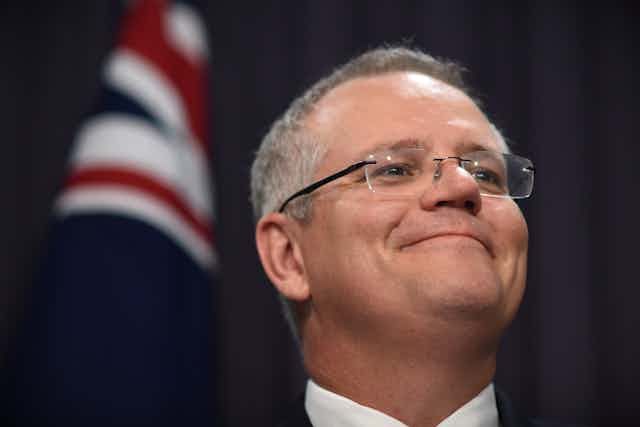Treasurer Scott Morrison will stress the difference between “good debt” and “bad debt” in a speech on Wednesday as he seeks to shore up the government’s economic credentials, including managing debt, to prevent a credit downgrade.
His address, to the Australasian Finance and Banking Conference, comes less than a week before Monday’s budget update, which will be scrutinised carefully by credit ratings agencies.
With last week’s national accounts showing growth going backwards in the September quarter, credit ratings agencies will be watching both the credibility of the numbers and the prospects for the government being able to get its plans through the Senate.
Morrison says in his speech, made available ahead of delivery, that given Australia has a relatively high amount of foreign debt, to which the Commonwealth contributes, it’s important to consider how this debt is being used.
“Bad debt is debt used for current spending purposes. Borrowing for this type of recurrent expenditure at the Commonwealth level is not sustainable and it is vital that we reduce our borrowing for day-to-day government spending,” he says – a point that has also been made by the Reserve Bank.
This is what the government is doing, Morrison says, with its “clear fiscal plan to return the budget to balance”.
“Once borrowing for recurrent expenditure is under control, we will have more headroom to take on and deploy so-called good debt”, he says.
“This is debt used for investment purposes that increases productive capacity and produces future income.”
Morrison is at pains to distinguish between “economic stimulus” of the kind Labor used in the global financial crisis and that the Coalition continues to attack, and “strategic investment in productivity enhancing and capability building infrastructure”.
He points to the government already investing in productive infrastructure that boosts economic activity but underlines that there must be a “vigorous process” to identify the projects that will most benefit productivity and growth.
At last week’s Council of Australian Governments meeting there was pressure from some states for more infrastructure spending.
Morrison says it is not good enough to call for more investment but fail to have done the planning to put forward projects that are ready to go. “We can’t invest in wish lists; we need concrete plans for concrete projects.”
The federal government would fund planning and development works for projects with clear strategic merit “but which are not yet ‘shovel ready’ ”.
When in opposition the Coalition talked about the “debt and deficit” crisis with little distinguishing of good and bad debt. Now it is applying a more nuanced approach.
“We need to protect against the vulnerability that this debt can create. Australia’s AAA credit rating supports Australia’s attractiveness as a destination for foreign capital, reducing pressure on funding costs and providing a further layer of resilience,” Morrison says.
“We have comparatively low levels of public debt compared to other countries, but it is high by historical and by Coalition government standards.”
Since the government came to office in 2013, “a disciplined program of fiscal consolidation has reduced the projected level of gross Commonwealth debt,” Morrison says.
Attacking Labor for failing to support some budget savings, Morrison says: “You could be forgiven for thinking Labor are already sabotaging the budget, to undermine Australia’s AAA credit rating for their own political gain”.

